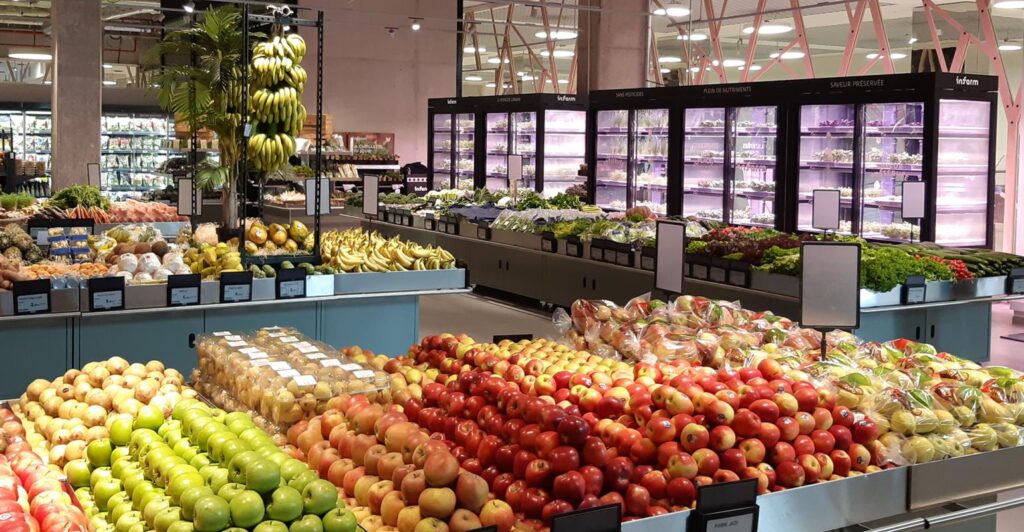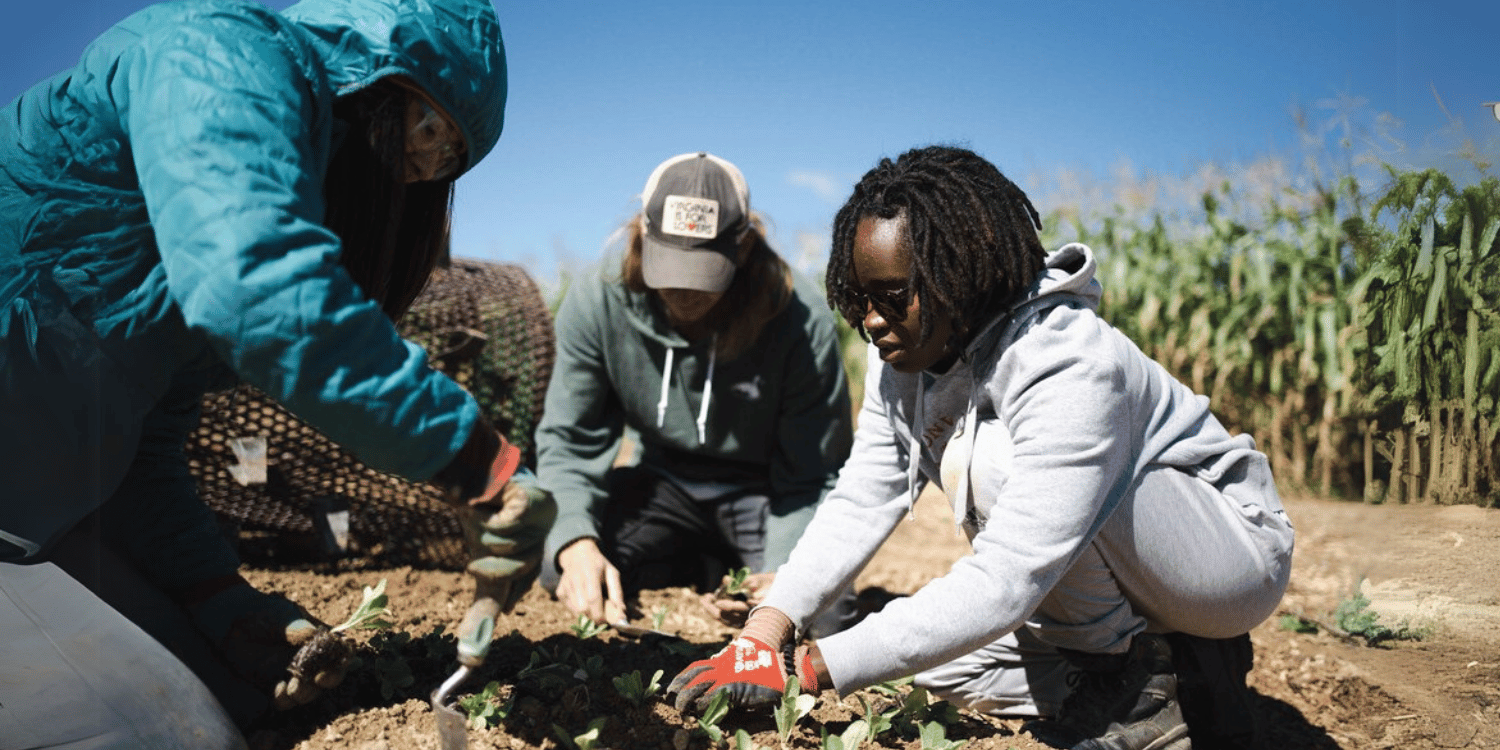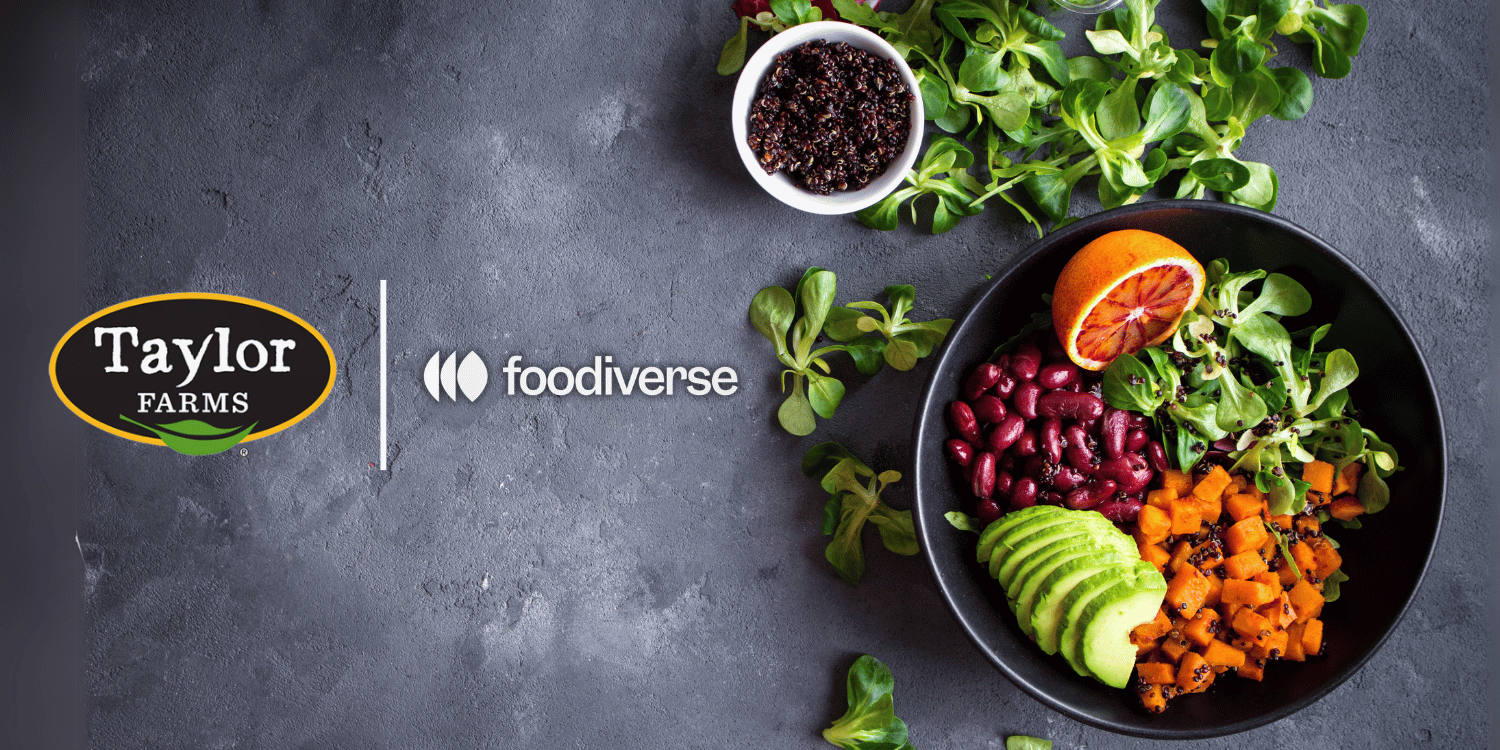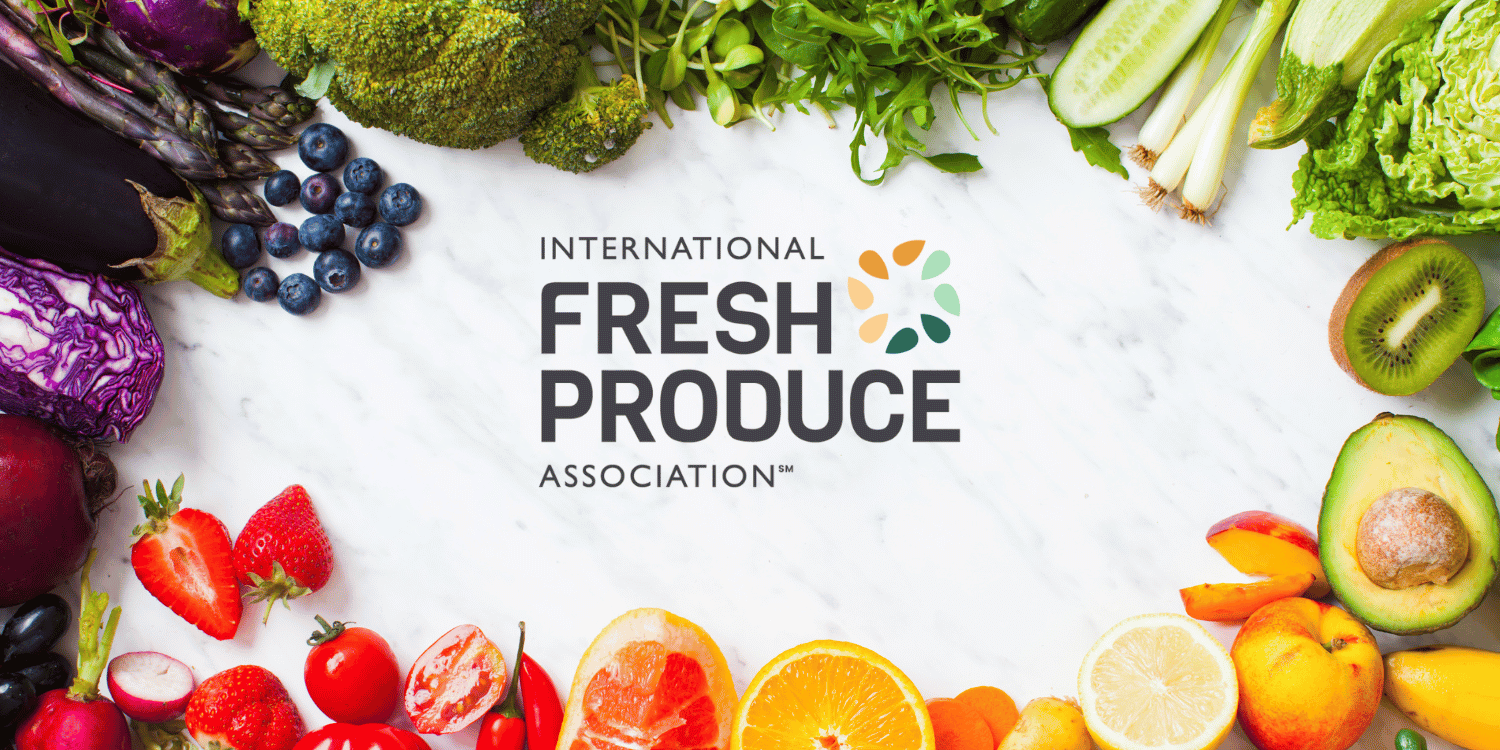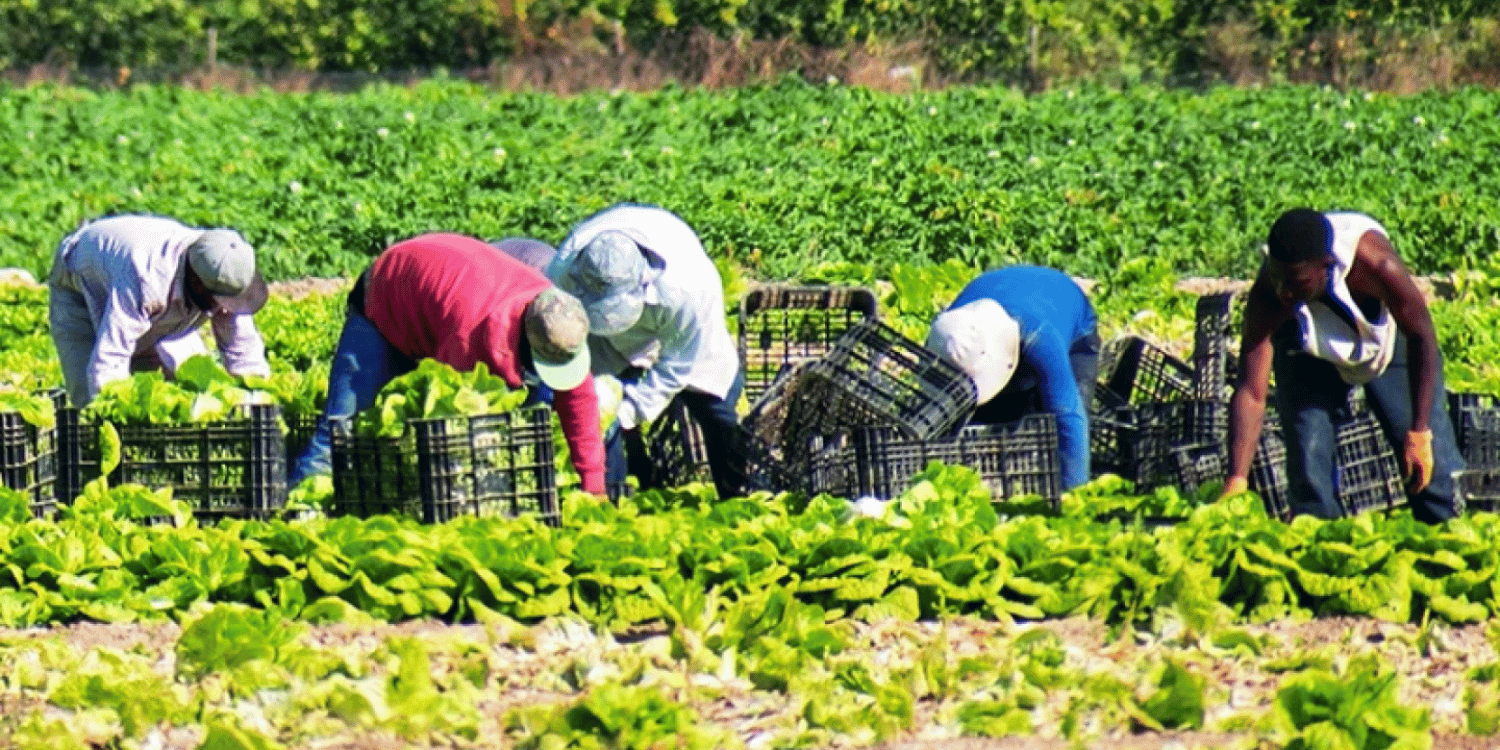Breaking into a major grocery chain requires careful planning and a thorough understanding of the retail environment.
First and foremost, it is essential to familiarize yourself with the supplier guidelines and regulations set by large companies.
Particularly dealing with Kroger, one of the largest supermarket chains in the United States, can be a challenging yet rewarding endeavor.
The path towards getting your produce on their shelves begins with meticulous preparation and perseverance.
This article sheds light on the strategies and considerations regarding this ambitious venture.
Let’s dig in into the essential tips to guide your enterprise towards success.
- Comprehend Kroger’s product preferences and customer base.
- Ensure products meet Kroger’s high-quality standards.
- Prioritize unique, attractive packaging and branding.
- Provide competitive pricing and quantity choices.
- Build a reputable track record with other retailers.
While I’ve outlined key tactics to get your produce onto Kroger’s shelves, this is just the start. In the upcoming sections, we’ll explore other crucial aspects to consider.
Topics include how to establish fruitful relationships with key personnel at Kroger, effective strategies for demonstrating your product’s worth, and helpful tips to ace product pitch meetings.
These sections aim to provide you with comprehensive guidance on the ins and outs of successfully securing a spot for your produce in Kroger stores. Let’s move ahead to gain a broader understanding of these integral components.
Contents
- Tips For Getting Your Produce Into Kroger’s Shelves
- 1. Understand Kroger’s Product Selection and Target Audience
- 2. Ensure Product Quality Meets Kroger’s Stringent Standards
- 3. Have Unique, Appealing Packaging and Branding
- 4. Offer Competitive Pricing and Quantity Options
- 5. Establish a Solid Track Record with Other Retailers
- 6. Contact Kroger’s Buyer with a Compelling Sell Sheet
- 7. Consider partnering with a food broker or distributor.
- The Bottom Line
Tips For Getting Your Produce Into Kroger’s Shelves
1. Understand Kroger’s Product Selection and Target Audience
In Short: To successfully market your produce at Kroger, understand the store’s product diversity and focus on offering high-quality, affordable items that cater to mid-range shoppers. Insight into customers’ purchasing patterns, the demographic that shops at Kroger, and the retailer’s aim to promote healthy, local produce can better position your product to meet these consumers’ needs.
When making the initial steps to get your produce on Kroger’s shelves, an essential starting point is to thoroughly understand Kroger’s product selection and target audience.
The Kroger chain offers a wide array of products, running the gamut from generic staple items to specialty products.
In fact, the store’s shelves are home to more than 20,000 different items on rotation.
It is, therefore, necessary to pinpoint where your produce will fit into this respectably broad selection.
Knowing that Kroger’s market is primarily mid-range shoppers seeking quality goods at a reasonable price is fundamental.
To appeal to this demographic, your product should offer high-quality but remain affordable.
Furthermore, as part of their initiative to advance healthier food options, Kroger has been shifting focus to organic and locally sourced produce.
Remarkably, this is where vendors who can articulate their commitment to such principles often enjoyed an advantage.
There are a few specific areas you may want to consider when understanding Kroger’s product selection and target audience:
- Product niche: What kind of produce are you offering and where does it fit in Kroger’s product scope?
- Audience receptiveness: Is there an existing demand for your product among Kroger’s customers?
- Retailer’s objective: Will your product help Kroger deliver on its promise to offer healthy and affordable groceries?
It is necessary to carry out in-depth research into what Kroger’s existing customers are buying before launching your product into the market.
This step will uncover market trends and give insights into what products are likely to sell better.
Understanding the demographics that shop at Kroger can also help shape your product selection and development.
Pro Tip: To successfully place your product on Kroger’s shelves, thoroughly understand Kroger’s product selection and target audience, ensure your products offer high-quality yet affordable value, align your product with Kroger’s focus on organic and locally sourced produce, and effectively research Kroger’s customer demographics and shopping trends.
Consider factors such as the ages, incomes, and lifestyles of Kroger’s typical customers.
Doing so will better position your product to meet the needs and desires of Kroger’s target audience.
2. Ensure Product Quality Meets Kroger’s Stringent Standards
In Short: To secure a spot on Kroger’s shelves, farmers and food companies must meet the grocery chain’s high quality standards and offer consistent product excellence. This requires thorough understanding of Kroger’s standards, strategic quality control, and a commitment to exceeding these standards to foster customer loyalty.
Kroger, one of the biggest grocery chains in the United States, is widely known for its focus on high-quality products.
Farmers and food companies aiming to get their produce on Kroger’s shelves must adhere to this rigorous focus on product quality.
This is not just about making a good impression on Kroger’s buyers – it is about establishing a long-term relationship based on trust and consistent product excellence.
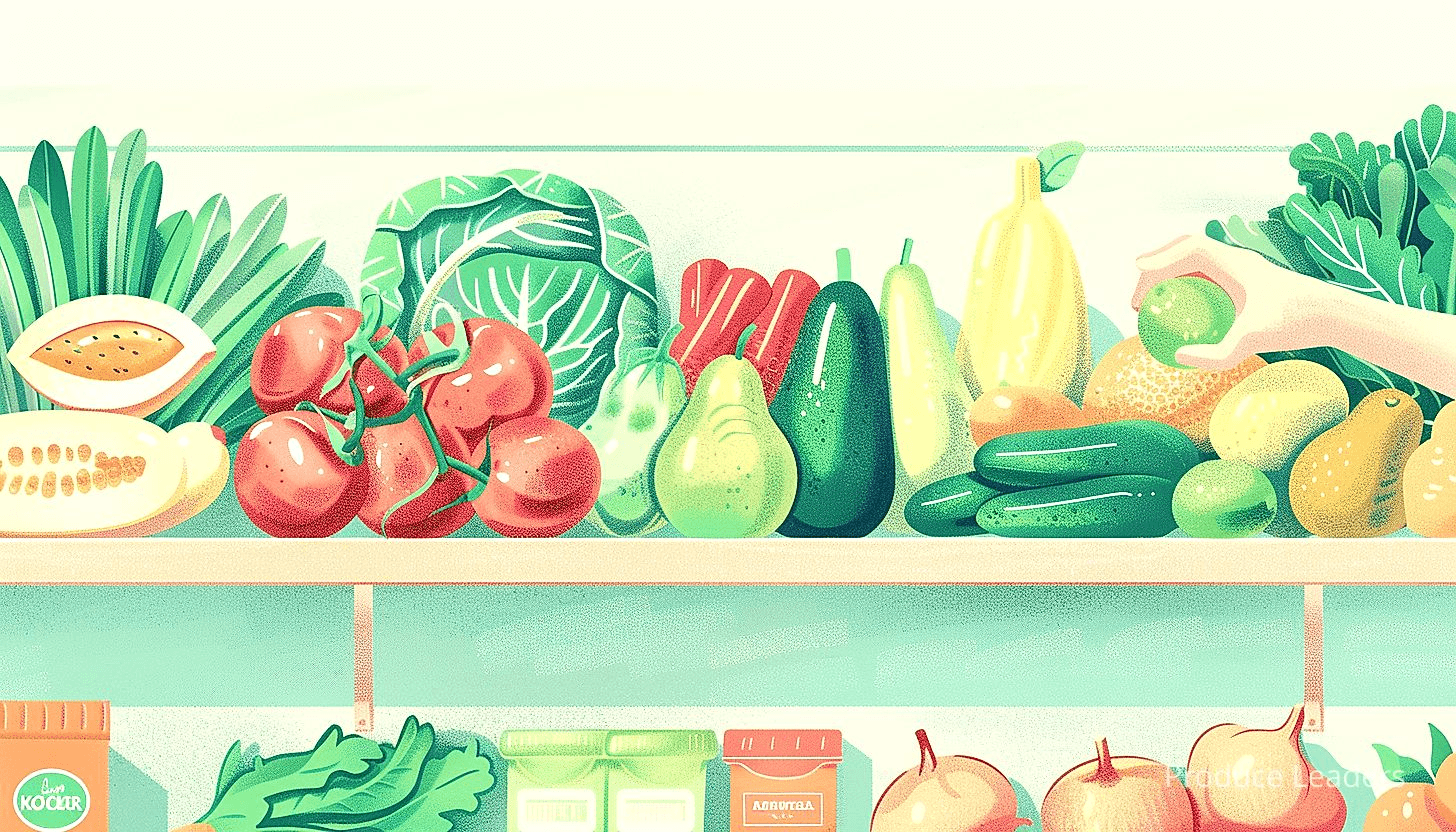
Ensuring that your product meets the quality standards expected by Kroger and its customers requires a thorough understanding of these standards.
This may involve investigating the types of products that currently occupy the Kroger shelves, reading customer reviews, and doing additional market research.
A list of key quality factors that Kroger buyers usually look for would help ensure your product meets the mark:
- Consistency: Your product needs to deliver the same quality every time it is produced.
- Freshness: For produce, freshness is a priority. This means you’ll need a fast turnaround from harvest to delivery.
- Appearance: All products, but especially produce, need to look good. This includes being free from blemishes or defects.
- Flavor: Kroger’s customers expect your product to taste good. This means you need to ensure great flavor quality, regardless of the season.
Next, it’s important to consistently maintain your high quality standards, from the farming techniques you use to the post-harvest handling of your produce.
A strong, proactive approach to quality control is crucial.
You’ll need to implement fail-safe systems to counter potential issues that could affect product quality, such as pest issues, shelf-life reduction, or damages in transit.
Remember the importance of verifying the quality of your produce before sending it off to Kroger.
A solid strategy here would be conducting in-house quality checks or hiring a third-party inspector.
Lastly, it’s not just about meeting Kroger’s quality standards – it’s also about exceeding them.
By providing a product that is so excellently produced and maintained, you will not only attract the attention of Kroger’s buyers, but also create a deeper loyalty from Kroger’s customers.
This is a crucial move for long-term success and growth for your product in Kroger’s stores.
3. Have Unique, Appealing Packaging and Branding
In Short: Unique, appealing packaging is crucial to getting your product on Kroger’s shelves, acting as a silent salesperson to draw customers’ attention. Carefully considering attributes like creativity, quality, legibility, brand consistency, and sustainability in your packaging strategy can increase sales and enhance customer experience.
Designing unique and appealing packaging and branding is a pivotal step towards getting your produce on Kroger’s shelves.
Encompassing much more than just the outer casing that holds your product, packaging is the principal link between your product and potential customers.
Packaging is the first introduction buyers get to your product and can be a key factor in their decision to include your produce in their offering.
Indeed, it is a silent salesperson.
It should be designed in such a way that it stands out rather than blending in.
Here are the keys to creating unique, appealing packaging for getting your product on Kroger’s shelves:
- Creativity: Unique design elements can give packaging a strong initial attraction, hence pulling in potential customers.
- Quality: High-quality packaging demonstrates that you value your product and you’re committed to quality. Kroger values this.
- Legibility: The product’s name and key information should be easy to read.
- Brand Consistency: Your brand’s personality should shine through. Branding is about more than aesthetic appeal; it also involves creating a package that speaks volumes about your product’s value.
- Sustainability: Environmentally-friendly packaging is increasingly important to consumers. Opt for sustainable materials if possible.
Fulfilling these criteria will help youenter Kroger’s assortment and their customers’ shopping carts.
I want you to remember, packaging should be viewed as an integral part of your brand’s marketing effort, not as an afterthought.
Your packaging is the first thing potential customers see before they even have the opportunity to taste your product, and Kroger is well aware of this.
Accordingly, if a consumer is drawn to your packaging, they are more likely to purchase your product and become a repeat customer.
Cost is another significant factor to consider when deciding on your product’s packaging.
Even though quality packaging might require a larger investment upfront, it could lead to increased sales in the long run—proving to be a worthy investment.
Consider this: Your product is new and fighting for visibility.
Your packaging design is your main weapon in this battle.
If your packaging has high shelf-appeal, it can attract shoppers, driving both trial and repeated purchases.
Lastly, don’t forget to pay attention to practical aspects like the ability of the product to withstand transportation or storage.
Important: Designing unique and appealing packaging and branding is a key step towards getting your produce on Kroger’s shelves, as it serves as the principal link between your product and potential customers and can significantly influence their decision to purchase your product.
Better functionality not only improves customer experience but also greatly reduces chances of product damage, returns and thereby, losses.
Let me tell you, if you want to get your products into Kroger’s shelves, invest in standout, high-quality packaging.
4. Offer Competitive Pricing and Quantity Options
In Short: Setting competitive prices and offering varied quantity options are key to getting your products onto retail shelves like Kroger’s, considering the cost of production, distribution, and marketing as well as consumer affordability. It’s important to find a balance between quality and price, to offer flexibility in quantity that caters to different types of customers, and to continually reassess pricing and quantity strategies to remain appealing and profitable.
Setting a competitive price is a pivotal factor when aiming to get your produce onto the reputable shelves of Kroger. As Kroger caters to a diverse consumer base, it’s important that the products they stock are affordable and accessible to a wide range of consumers.
You have to be mindful of the costs of production, distribution, and marketing, at the same time maintaining a profitable margin. This balancing act is essential in setting a price that will not only be appealing to Kroger but its customers as well.
For instance, if your product is premium, you can justify a higher price with its unique offering and superior quality. But remember, the price should still make sense to the average Kroger shopper who has a number of alternative options.
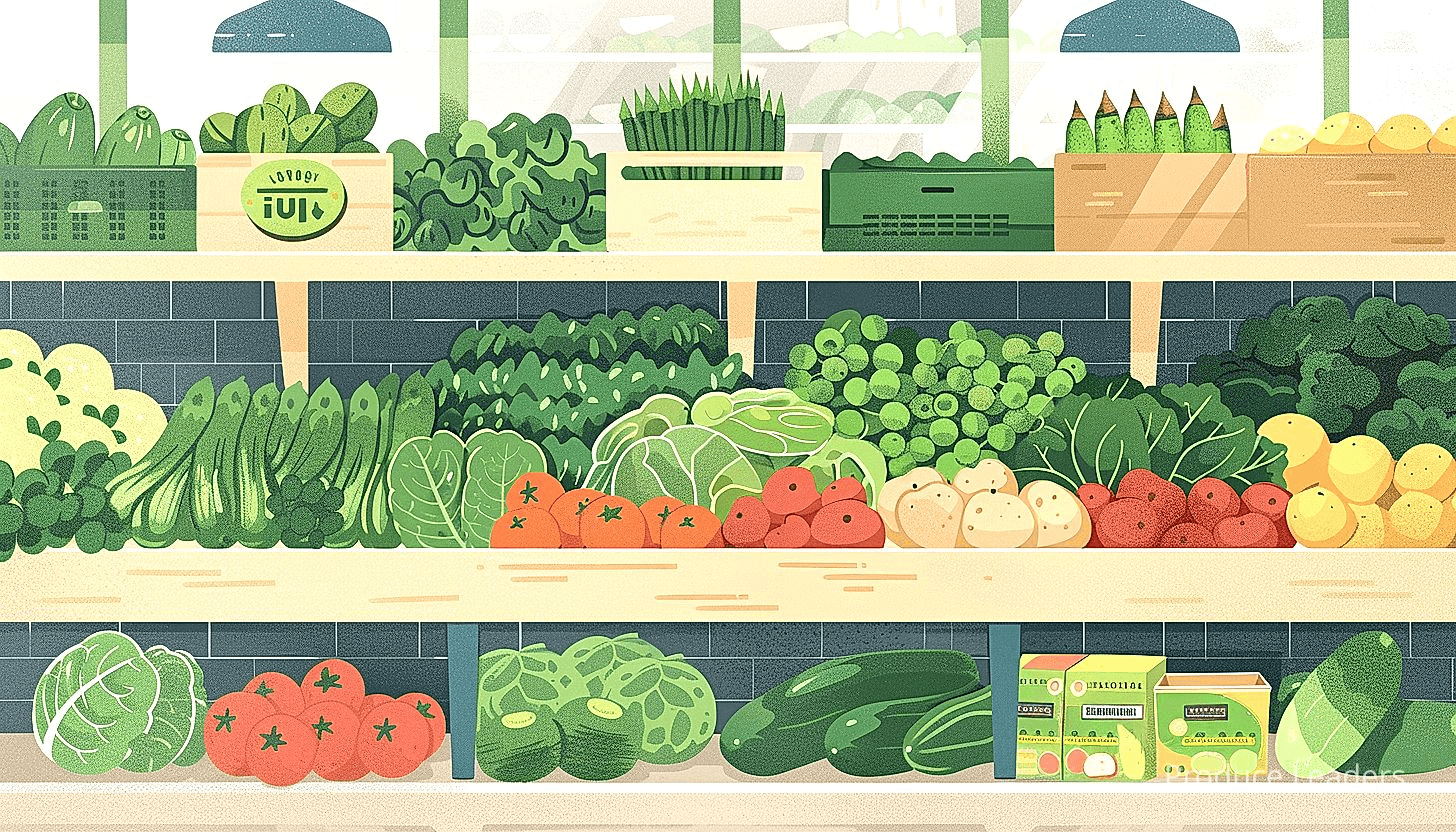
A crucial aspect of competitive pricing involves researching your competition. I’d like to share a few key points one has to keep in mind when pricing their produce:
- Gauge the market: By understanding the price range of similar products in the market, you can smartly price your produce.
- Balance quality and price: Price your produce according to the quality. A high-quality product merits a slightly higher price.
- Think volume: Keep in mind, large retail chains like Kroger often prioritize suppliers who can handle large volumes, sometimes at a lower margin. A lower price with higher volume can actually lead to greater profits.
Beside price, another important aspect to consider is the quantity. Offering various quantity options makes your product appealing to different types of customers, from small families to sizeable businesses.
Consider offering bulk options, those can be attractive for large households, restaurants and institutions.Bulk packaging also often has the benefit of reducing the per unit cost, which makes it easier on the customer’s pocket.
However, don’t overlook the benefits of offering smaller packaging as well. Size diversity caters to single consumers, or those wanting to try your product for the first time before committing to larger quantities.
Flexibility in quantity options can enhance product appeal and increase the likelihood of Kroger accepting your product, as it meets the varying needs of their diverse clientele.
Pro Tip: Ensure your produce is competitively priced and offered in a variety of quantities, factoring in production, distribution, and marketing costs while maintaining a profitable margin and meeting the needs of diverse customers.
Lastly, understand that competitive pricing and quantity options go hand in hand with the quality of your product. There should be a harmonious balance between these factors. If one factor outweighs the other, it might drag your product down rather than lifting it up to the well-stocked shelves of Kroger.
Keep in mind that offering competitive pricing and versatile quantities is not a one-time job. It’s a continuous process of research, calculations, and possibly readjustments to remain attractive and profitable in the competitive world of retail.
5. Establish a Solid Track Record with Other Retailers
In Short: To successfully sell products at Kroger, establish a solid track record with other retailers by demonstrating consistent sales, favorable returns, and positive feedback. Cultivate the trust of Kroger by fostering and maintaining successful partnerships, ensuring timely deliveries, resolving conflicts swiftly, and continually improving your product.
If you aim to have your produce grace the aisles of Kroger, it’s essential first to establish a solid track record with other retailers. Kroger would be more likely to stock your items if you can demonstrate successful retail partnerships in the past.
Just as it is with any business relationship, trust is crucial. Retailers need to know that your product will sell and that you’re reliable. Having a proven history with other retailers can significantly increase their trust in your brand.
Prior success in retail could mean you have consistent sales, a favorable return rate, and positive customer feedback. These markers of success signal to Kroger that your product is desired and will likely perform well on their shelves too.
Sustained successful partnerships with other retailers are also essential. This shows that you can maintain professional relationships over time, handle large orders, adhere to delivery schedules, and meet other demands of heavy retail partnerships.
Now let’s dig in into tips you can employ to foster successful retail partnerships and thus boost your chances of getting your products into Kroger:
- Demonstrate your product’s consistency by maintaining high sales volume and quality over time.
- Timely deliveries – not just the first few times, but always. Regular and punctual deliveries show your seriousness and commitment.
- Navigate and swiftly resolve any concerns or conflicts, maintaining open and responsive communication lines.
- Regularly update the retailer about improvements to your product or production process.
Presentation of your product’s successful history may come in various forms. Prepare a detailed report outlining your sales history, customer feedback, and any marketing efforts you have undertaken. High-definition pictures or videos of your product in different retail environments can also be useful visual confirmation of your track record.
Consider providing a list of references – other retail managers who have successfully dealt with you. Their testimonials could considerably raise your trust level in the eyes of the Kroger buyer.
It’s essential to note that establishing a solid track record isn’t an overnight endeavor. It requires time, consistency, and commitment. This step might be the longest but potentially the most rewarding.
Never underestimate the power of a good reputation. The grocery industry is more tightly-knit than one might think. A good word from one retailer might be all it takes to get your foot in the door at Kroger.
Lastly, although sales are not the sole criterion, consistent, strong sales can speak volumes. This is probably the most compelling proof that customers like your product and will lead to a higher likelihood of your brand being accepted by Kroger.
Track records are not only for show, but they also help you improve your products for better performance in the market. It’s an ongoing journey as it’s crucial to keep enhancing your track record. Strive to make each retail partnership better than the last one. This continuous improvement will undoubtedly attract the attention of Kroger buyers.
6. Contact Kroger’s Buyer with a Compelling Sell Sheet
In Short: To get your produce on Kroger’s shelves, it’s vital to present a compelling sell sheet to their buyer which showcases all the distinct features and benefits of your product. The sell sheet should detail your product’s name, pricing, packaging, contact details, and competitive advantages to captivate the buyer and aptly portray its retail potential.
Perhaps one of the most critical steps in getting your produce on Kroger’s shelves is contacting their buyer with an impeccable sell sheet.
The sell sheet, in essence, is your product’s resume, and it’s of paramount importance that you create it in an alluring way.
This should include crucial information about your product that would interest a buyer and allow them to assess whether it’s a fit for the supermarket giant.
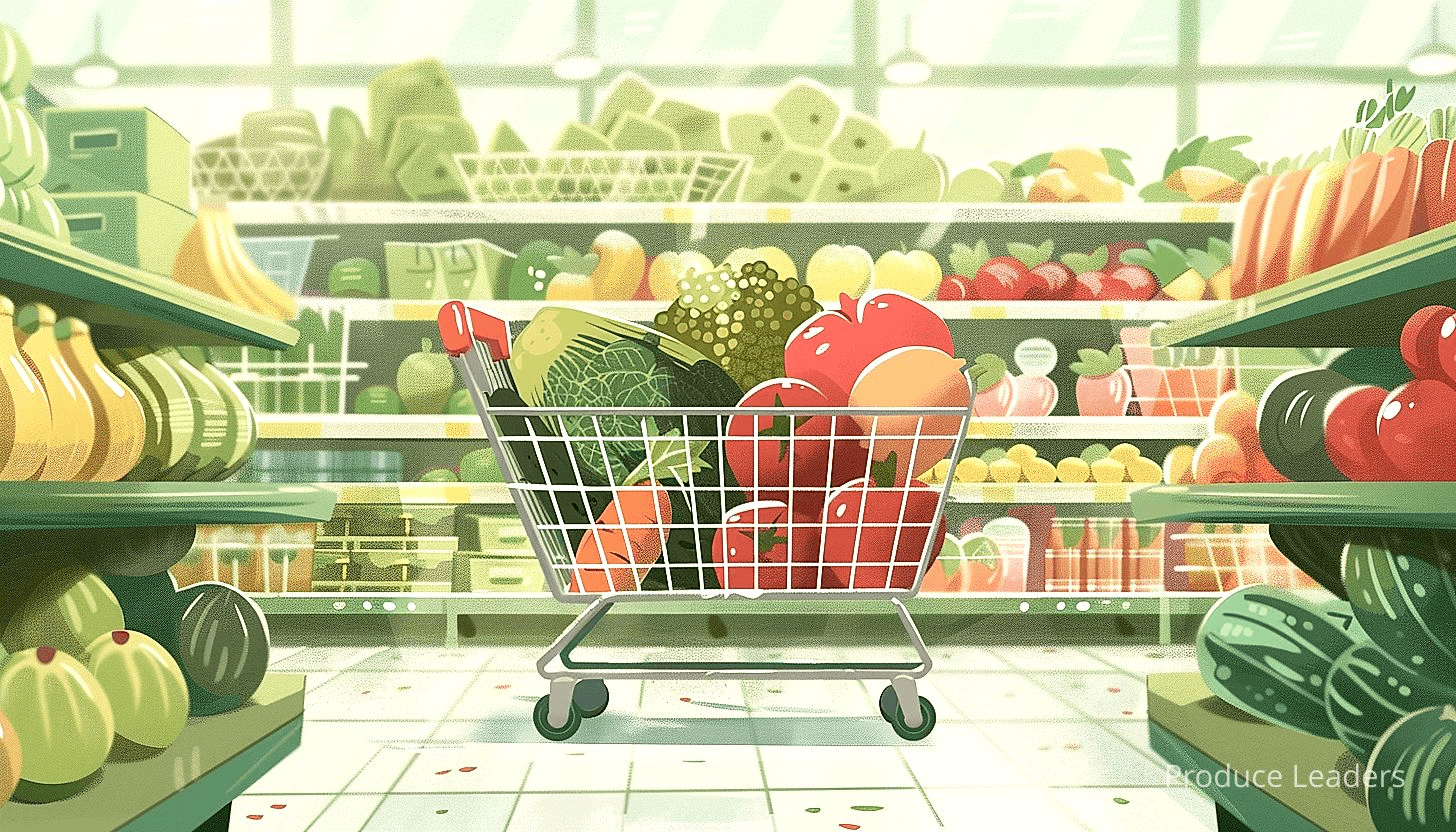
The sell sheet should display your product’s distinct competitive advantages, nutritional facts (if applicable), and any social proof, like testimonies or awards your product may have earned.
It’s also important to include pricing, packaging, display information, and ordering details on the sell sheet.
As a hint to help you navigate through the labyrinth of selling to a large retail group like Kroger, here are some fundamental components that should be part of this sell sheet:
- Product name and description: Convey what your product is and its unique features.
- Packaging image: If possible, place a high-resolution photo of the product in its packaging. This gives the buyer a clear sense of your product’s shelf appeal.
- Pricing and ordering information: Include both retail and wholesale pricing along with minimum order quantities.
- Contact information: The basics – e-mail, phone number, and the company’s physical address.
Remember that the primary role of a sell sheet is to captivate the buyer. It’s key to use the sheet to demonstrate how your product could capture the attention of Kroger’s customers, drawing them to pick up your produce and, ultimately, boost Kroger’s sales.
The downside of not having a compelling sell sheet is that the buyer might overlook your product, no matter how great its potential is.
To ensure your sell sheet fits the bill, consider getting professional help or guidance with design and copy. Aesthetics and concise compelling language can play a key role in getting the buyer’s attention.
Remember that every brand competing for retail shelf space is armed with their version of a sell sheet.
Your sell sheet not only has to stand out in the sea of papers on a buyer’s desk but precisely articulate why your product is a perfect fit for Kroger and their specific demographic.
After sending your sell sheet, the following step will be some form of follow-up. This can make the difference between seeing your produce on Kroger’s shelves, or back at the drawing board.
7. Consider partnering with a food broker or distributor.
In Short: Partnering with a food broker or distributor can aid in placing your product on Kroger’s shelves by navigating the grocery retail industry’s complexities. Choose a broker who understands your industry, has a good relationship with Kroger, offers additional services, and has clear fee implications.
While it’s critical to ensure your product meets and excels all criteria, another strategy to get your produce on Kroger’s shelves is to consider partnering with a food broker or distributor.
A food broker or distributor, also known as a manufacturer’s representative, can assist you in navigating the complexities of the grocery retail industry.
These professionals have substantial trade connections, as well as a deep knowledge of the intricate workings of the grocery retail sector, including Kroger.
The role of a food broker or distributor is to serve as a liaison between the producer and the retailer.
They can help with important steps such as product representation, pricing negotiation, promotional planning, and making sure your product meets retailer’s expectations.
It’s beneficial to note that food brokers often have an existing relationship with grocery chains, so they might be able to get your product in front of the right people at Kroger.
Before diving in, here are a few factors to consider when choosing the best food broker or distributor for your needs:
- Industry specialization: Some brokers may focus on certain types of products or categories. Choose someone who knows your industry.
- Relationship with Kroger: Having a broker with an existing positive track record with Kroger can be a major advantage.
- Services offered: Beyond simply securing shelf space, a food broker can provide additional services like marketing and promotional support.
- Fees and charges: Be clear about what you are expected to pay. Some brokers work on commission, while others may charge a flat fee.
Finding the right broker or distributor might be a time-consuming process but ensuring you have a reliable partner can be a big step towards having your fresh produce on Kroger’s shelves.
Keep in mind, this partner will be an extension of your brand and a major part of your business’s growth strategy.
Therefore, be sure to pick a food broker or distributor who understands your product’s unique value and is committed to promoting and selling it effectively.
Finally, even after hiring your food broker, don’t forget to actively participate in the process.
Important: Partnering with a food broker or distributor can help navigate the complexities of the grocery retail industry, provide trade connections, assist in product representation, pricing negotiation, promotional planning, and ensure your product meets retailer’s expectations.
Consistently communicate your objectives, concerns, and requirements, and always be open to feedback and advice.
You are a team, and although they’re the expert in their field, no one knows your product better than you.
The Bottom Line
Breaking into Kroger’s shelves can be a major steppingstone for any produce supplier. There is a wide array of strategies and preparation tasks that need to be implemented effectively for success. Diligent research and apt modifications can go a long way in meeting the stringent norms of this retail giant. Suppliers who take time to understand the nuances and adapt accordingly can indeed establish strong commercial ties with Kroger. Regardless of the challenges, with persistence and commitment, securing a spot on Kroger’s shelves can become achievable.

